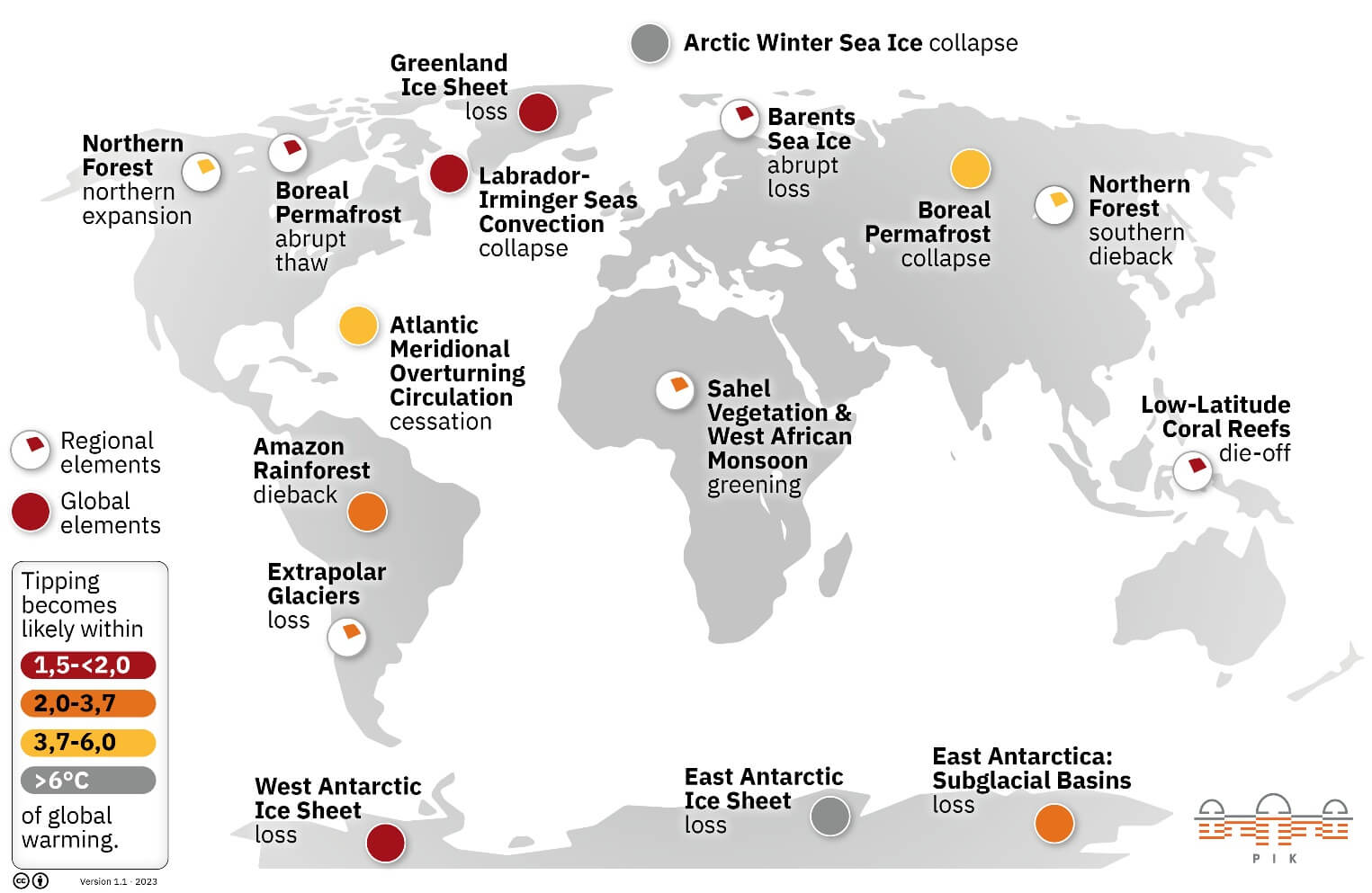Why in the News?
The Global Tipping Points Report (2025), authored by 160 scientists from 23 countries, warns that warm-water coral reefs have already crossed their thermal tipping point, triggering irreversible dieback.
About Tipping Points:
- Overview: Tipping Points are critical thresholds in Earth’s natural and climate systems beyond which self-reinforcing and often irreversible changes occur.
- Mechanism: Once crossed, feedback loops accelerate transformation — e.g., melting permafrost releases methane, which increases warming and causes more melting.
- Irreversibility: Even if greenhouse gas emissions are later reduced, many systems cannot revert to their original stable state.
- Significance: Tipping Points determine long-term planetary stability, climate predictability, and biosphere resilience.
Important Definitions:
- Climate Tipping Point (IPCC): A critical threshold at which small changes in temperature or forcing cause a large, often irreversible shift in a climate subsystem.
- Feedback Loop: A process where an initial change triggers further effects that amplify the original disturbance (positive feedback).
- Hysteresis: The property of a system where reversing to its prior state requires conditions much different from those that caused the initial change.
- Cascade Effect: A phenomenon where crossing one tipping point triggers others in connected Earth systems, leading to compounded impacts.
- Thermal Tipping Point (for Coral Reefs): The temperature threshold (~1.2°C above pre-industrial) beyond which coral survival and recovery become impossible.

Key Global Tipping Points Identified:
- Ice Sheets: Collapse of Greenland and West Antarctic ice sheets, committing the planet to multi-metre sea-level rise.
- Coral Reefs: Permanent dieback of warm-water reefs due to ocean warming and acidification, destroying marine biodiversity.
- Amazon Rainforest: Shift toward a savannah ecosystem, reducing carbon storage and regional rainfall.
- Atlantic Meridional Overturning Circulation (AMOC): Potential shutdown below 2°C, disrupting global heat distribution and monsoon patterns.
- Permafrost Thaw: Release of methane and CO₂, reinforcing global warming.
- Boreal Forests & Mountain Glaciers: Increased risk of widespread dieback and loss of freshwater reserves.
- Sub-Polar Gyre (SPG): Destabilization in North Atlantic circulation, altering marine ecosystems and heat flow.
Highlights from the Latest Reports (Global Tipping Points 2025):
- Study Scale: Conducted by 160 scientists from 23 countries, assessing multiple Earth-system thresholds.
- Coral Crisis: Since January 2023, 84.4% of coral reefs across 82 nations have suffered bleaching — marking the fourth global mass event, the worst on record.
- Temperature Thresholds: Exceeding 1.5°C global warming risks triggering multiple tipping points; 1.2°C already breached for warm-water reefs.
- AMOC Collapse Risk: Could occur below 2°C, potentially plunging northwest Europe into severe winters and disrupting global food and water systems.
- Amazon Dieback: Widespread collapse possible below 2°C, directly affecting 100+ million people dependent on its ecosystem.
- Interconnected Risk: Earth’s systems form a tipping network — crossing one threshold may accelerate others, creating a domino-like cascade.
- Policy Warning: Current Paris Agreement pledges and net-zero targets are inadequate to limit warming below 2°C.
| [UPSC 2024] One of the following regions has the world’s largest tropical peatland, which holds about three years’ worth of global carbon emissions from fossil fuels, and the possible destruction of which can exert a detrimental effect on the global climate.
Which one of the following denotes that region? Options: (a) Amazon Basin (b) Congo Basin* (c) Kikori basin (d) Rio De La Plata Basin |
Get an IAS/IPS ranker as your 1: 1 personal mentor for UPSC 2024

